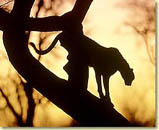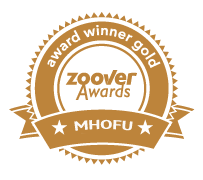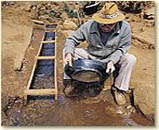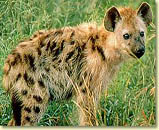 Mhofu, our holidayhouse
Mhofu, our holidayhouse  Mpumalanga
Mpumalanga
Mpumalanga South Africa
Nelspruit is the capital of the province of Mpumalanga. The city lies in the fertile valley of the Crocodile River, 330 kilometers east of Johannesburg in the hot and humid Lowveld. The Malelane Gate, southern access to the Kruger Park, is about 60 kilometers away. Nelspruit is the trading centre for the surrounding fruit growing area of Mpumalanga. Fertile soils and subtropical climate provide perfect conditions for the production of citrus and tropical fruits, mainly mango, banana, avocado, macadamia and pecan nuts. Nelspruit is very pretty in spring and summer, when innumerable bougainvilleas, bauhinias and other blooming plants transform the town into a sea of color. Nelspruit has a train station and a modern airport, which is serviced several times a day.
Position
Nelspruit is situated in a strategic position, being only 50 kilometers from the Kruger Park. The Panorama Route and the Blyde River Canyon are also in easy reach as well as the borders to Mozambique and Swaziland. The surrounding area offers ample opportunity for various outdoor activities like cave climbing, white water rafting, hot-air ballooning adventures or prospecting for gold. The Riverside Mall Shopping Centre is in Nelspruit and is a popular shopping mall, where one can find - amongst other things - attractive arts & crafts and jewelry items, because many artists have taken residence in the town and its surroundings.
Lowveld Botanical Gardens
The botanical garden on the outskirts of Nelspruit is one of its greatest attractions. Spectacular cascades and waterfalls of the rivers Nels and Crocodile are the core of this tropical paradise. Visitors can encounter the typical Lowveld vegetation, rainforest, cycads and many other endemic plants. You will find more than 2000 plant species on almost 160 hectares. Guided tours are available.
CrocRiver Enviro Park
This private reptile park is one of the biggest in South Africa. Besides crocodiles, there are many other reptiles, snakes and spiders from all over the world.
Sudwala Caves
The famous Sudwala Caves - with its beautiful stalagmites and stalactites - are approx. 2 million years old and rank among the oldest caves in the world. They lie about 37 km outside of Nelspruit ( R539 Sabie Road ).
Pilgrim's Rest Mpumalanga
Pilgrim's Rest is a historical gold-mining town. In the year 1873, the digger Alec Patterson was roaming the densely forested hills, all the while pushing a wheelbarrow with his belongings. At a place later called "Pilgrim's Creek" he got lucky. He saw big lumps of gold shimmering in the clear water. Full of joy he exclaimed "The pilgrim can rest!" Soon thereafter, the gold rush started. Diggers from all over the world flocked to Pilgrim's Rest and settled along the river. The town developed rapidly.The gold finds of Pilgrim's Rest turned out to be the richest alluvial gold deposits (surface gold) in southern Africa . In 1895 the Transvaal Gold Mining Estate Ltd was founded and bought successively all the claims of the diggers, most of them only about 50 sqm in size. The company worked profitably until the middle of the 20th century. Eventually, in 1971 the resources were exhausted and the operation was shut down. In 1972 the former company town of Pilgrim's Rest was bought by the government and declared a National Monument. The old buildings were meticulously restored, preserving the special character of the place with its tin-roofed cottages. Visitors can nowadays walk through various of theses houses, e.g. the "Miner's House", a typical, very humbly furnished dwelling of a gold digger. Or "Alanglade", which used to be the residence of the director of the Transvaal Gold Mining Estate Ltd, furnished with pieces of the 1920s. The "Drezden Shop" is the town's historic general store. Here one could buy anything, groceries, whisky, tools, household articles and much more. A lot of old merchandise is exhibited in the store. The old newspaper printing office and the Royal Hotel are also open to visitors. And at Pilgrim's Creek visitors can still today try their luck at gold washing.
Kruger Park General Information
The Kruger National Park is the primary destination in South Africa for many international tourists. Each year more than half a million visitors are registered. The National Park was opened in 1898 at the instigation of then-president Paul Kruger. After hunters had considerably decimated the originally rich game stock, all the land between the Sabie and the Crocodile Rivers was put under the protection of Nature Conservation to ensure the survival of the remaining animals. Only as recently as 1961 was the extended Kruger Park fenced in. The park stretches from the Crocodile River (closeby Mhofu) in the south up to the Limpopo River, which is the international border in the north. Altogether it is 350 km long, 65 km wide and comprises an area of about 20,000 sq km. A web of roads of 1863 kilometers leads through the National Park, 697 km of them being tarred. For the visitor there are numerous differently equipped rest camps, most of them scenically positioned. Within the park boundaries, travel is only allowed between sunrise and sunset. After dark one has to stay in one of the fenced rest camps. The best time for observing the animals is the dry winter season. Then the grass is low and bushes and trees don't have leaves, so that one can have an unobstructed view. Because it virtually doesn't rain in winter, the animals come to the waterholes to drink in the mornings and evenings and can easily be watched from the car.
Kruger Park Ecosystem
The game stock in the Kruger National Park is globally unique. 114 different species of reptiles, 507 bird and 147 mammal species are represented here. About 3000 hippos and just as many crocodiles live in the rivers which have water all year long. On land, the Impala antelopes are the most numerous animals, with more than 90,000 specimens. Some 30,000 zebras and 15,000 buffaloes also bustle about in the vast savannah, and 5,000 giraffes and 8,000 elephants keep them company. Only the rhinoceros seems to be a bit under-represented with a population of only 300. However, the number of predatory cats is considerable: 1,500 lions, 900 leopards and 300 cheetahs are part of this magnificent eco-system. The vegetation in the Kruger Park consists mainly of Bushveld, a combination of grassland, various shrubs and trees. In the northern parts of the park the vegetation is, due to the higher rainfalls, more dense than in the south. There is also the characteristic African baobab tree.



